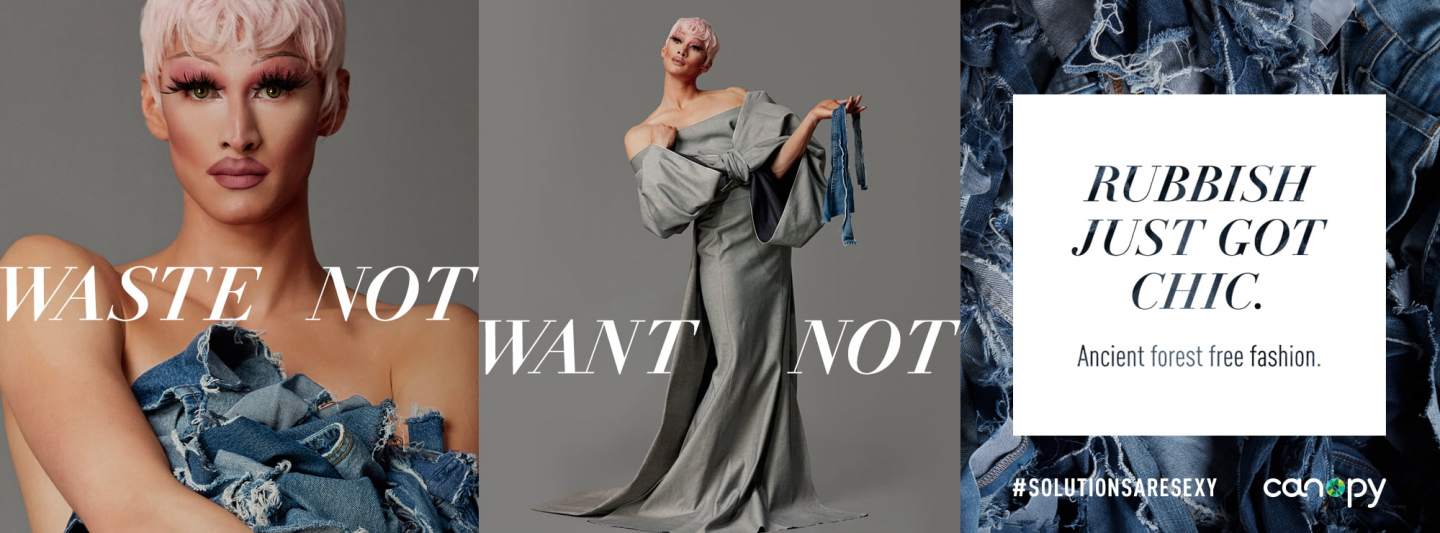
Fabric Solutions
Consumers and companies alike are discovering just how much forest habitat is disappearing into our closets. Since 2013, Canopy has been working to revolutionize the fashion supply chain, and ensure fabrics are free of Ancient and Endangered Forests by catalyzing the production of Next Generation Solutions.
The EPA reports that in just one year, landfills accumulate 92 million tonnes of textile waste globally, a staggering amount by any calculation.* Meanwhile, a growing number of producers are using this waste to make Man Made Cellulosic Fibres from recycled textiles such as old cotton jeans and t-shirts otherwise destined for landfills. Exciting new technologies that draw on other alternative feedstocks, such as agricultural waste left after the food harvest or microbial cellulose grown through fermentation to make fabrics, exist right now. At Canopy, we are helping to take them from the margins of the marketplace and bringing them to the mainstream.
We consider a lot of things when we choose new additions to our wardrobe — size, fit, feel and cost. But, what about the fabric itself and where it comes from? When it comes to clothes that have viscose, rayon, modal, acetate and lyocell on the tag, following the thread will lead you back to a landscape that was once a forest.

Each year, more than 200 million trees are cut down, processed with intensive chemicals and dissolved into wood pulp, which then gets turned into fashion textiles. Following the thread from skirts, suits, and t-shirts to their source shows how fashion supply chains may have unintended impacts on communities, climate, and the countless species ranging from endangered Sumatran tigers to black bears and lynx.
NextGen Solutions carry a far lighter carbon, habitat, water, and chemical footprint than conventional wood-based fabrics. On average, they consume 75% less energy, up to 90% less water, use greener or no chemicals in the production process, and include zero forest habitat.
Circular economy fabrics are already hitting the catwalk and are ready to be scaled. A number of the world’s largest Man Made Cellulosic Fibres producers are already making them. By choosing stylish creations made from recycled textiles or agricultural residues rather than those that come at the expense of vibrant forests, our wardrobes make us look good, in so many ways.

CanopyStyle
Being stylish doesn’t have to cost the Earth – and to prove it, we’re tackling the impact of forest-based fabrics, such as Man Made Cellulosic Fibres, with CanopyStyle, one of the fastest growing environmental initiatives in the fashion sector. Through CanopyStyle, we partner with leaders in the fashion industry to secure protection of vital forest ecosystems, drive supply chain transformation, and spur the production of Next Generation fabrics. Now, that’s always in season!

Partner with Canopy
Want to join the hottest new collaborative design trend? Canopy is an environmental not-for-profit working with hundreds of companies to create systems change and do better for our planet and the climate.
Learn about existing solutions and how to partner with us to ensure the world’s threatened forests remain standing.




